Experts explain how tritium in water impacts health and safety
February 20, 2023
With Holtec’s announcement earlier this month that it plans to dump a million gallons of contaminated wastewater from the Indian Point nuclear power plant into the Hudson River sometime this summer, the latest Critical Public Health & Safety expert panel, organized by a coalition of environmental advocacy groups, took on new urgency amid calls for action on the part of citizens.
A Thursday, February 16th seminar on Zoom featured three experts in the fields of medicine and science who walked the 265 viewers through the ramifications of radioactive hydrogen or tritium entering the water that is a drinking source for seven communities. The webinar was the second in a series on the topic, following an initial session on January 26th.
Holtec International is conducting decommissioning operations at the Buchanan facility. Rich Burroni, a company representative, told the Decommissioning Oversight Board on Feb. 2 that their company’s goal is to finish the decommissioning of the site in 12 to 15 years and return the land to the Village of Buchanan. This includes dumping the tritium tainted water into the Hudson.
In his opening remarks, County Executive George Latimer explained that many other elected officials were listening in on the webinar, including representatives from federal office holders. The federal Environmental Protection Agency and Nuclear Regulatory Commission have jurisdiction over the radioactive materials released during the decommissioning. “None of us can afford to have this (decommissioning) done incorrectly. We are students of science. Our economy is tied to the environment,” said Latimer and noted that what happens at Indian Point affects all of the Hudson River Valley.
Arnie Gundersen, chief engineer at Fairewinds Associates and a former nuclear industry executive with 51 years of experience, spoke about the adage used by the industry, “Dilution is the solution to pollution” and explained that there is no way to filter tritium out of the water. The solution for Holtec, said Gundersen, is the cheapest method, which is releasing the water from the highly radioactive fuel pools into the Hudson.
“Holtec makes money by knocking things down,” said Gundersen. He referenced two other scenarios for dealing with the contaminated water that don’t involve discharge. The Vermont Yankee plant had zero liquid plant discharge because it solidified and shipped the water to a licensed NRC facility. Another solution Gundersen said is to keep the fuel pool onsite.
The potential health impacts of environmental exposures to children was the subject of Dr. Kathy Nolan’s presentation. Nolan, a pediatrician, bioethicist and Ulster County legislator, said federal regulations set standard guidelines around the radioactivity of certain radioactive elements. Those regulations base standards on the average of health risks for young, white males. “That can give the initial starting point but it doesn’t tell the whole story,” said Nolan who is the President of Physicians for Social Responsibility of New York and co-founder of Concerned Health Professionals of New York.
Nolan described the five toxins that are harmful to health – the first two are familiar to most of us: infections, like the flu, and caustics such as acid, which can cause burns. The remaining three may be less familiar: mutagenic, which is an abnormal DNA or RNA in cells; carcinogenic which causes cancers in the cells; and teratogenic which are substances that cause abnormal growth. “These cancerous agents are problematic for young children, particularly for their nervous systems,” she explained. For developing embryos and fetuses, the teratogenic agents are problematic because of the extraordinary rates at which cells are dividing at that time. “Tiny disruptions early in life can have major implications,” she added. “Radioactive elements are not minor.”
Dr. Nolan’s comments were followed up by biologist and founder of the Gender and Radiation Impact Project, Mary Olson who has studied the disproportionate harm from radiation exposure tied to biological gender.
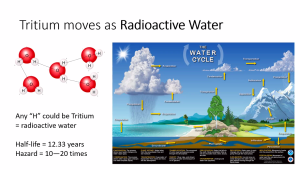
The most protected areas–the brain–the spinal cord–and across the placenta into the developing embryo and fetus of pregnancy can be exposed to the beta radiation that tritium emits. Women and children are more susceptible to this form of radiation. “Girls are not a subpopulation. They are an inextricable link in the human life cycle. And we are not providing a safe environment for them,” said Olsen.
Dr. Courtney Williams, a Peekskill resident and cancer researcher, moderated the call and began by giving a historical overview. “The goal of this speaker series is to become educated and arm ourselves with information for the advocacy to help shake the decision makers out of complacency,” said Williams who is the co-founder of Safe Energy Rights Group (SEnRG). She told of when she got involved in advocacy around the plant. “It was when the Nuclear Regulatory Commission thought it was okay to co-locate a high transmission gas pipeline under the nuclear power plant.

She then illustrated the level of oversight coming from the Nuclear Regulatory Commission around the appearance of Cesium 137 on the roof of the building at the decommissioning Pilgrim Nuclear Power Plant in Massachusetts. According to Williams, the report was dated August 2020, and the NRC’s inspection report was dated November 2022. It was not until earlier this month, February 2023 that the inspection report was made public. “We shouldn’t be waiting three years for information,” said Williams. “We should not be trusting the NRC or Holtec. Their goal is to make money.”
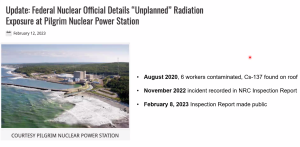
At the end of the 90 minute presentation, Williams listed action steps people watching could take. She mentioned that 369 people registered for the presentation and they will receive a recording of it. “We need to rattle some cages and shake officials out of complacency.”
“Just because it’s legal doesn’t mean it’s safe. These companies have made a social bargain to operate, and we take on the risk. Call elected officials and tell them to not allow the water to be dumped into the Hudson River.”
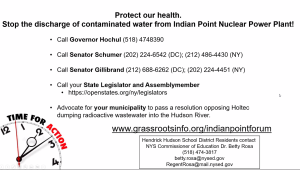
Williams ended the call with some take-home lessons from the experts: “Just because it’s legal doesn’t mean it’s safe. The legal limits are based on outdated science. Legal limits are based on industry standards, not public health and safety. Radioactivity cannot be filtered out of the water. Feasible alternatives to dumping exist. Holtec is motivated by profit, not public good. Once the water is dumped, it cannot be undone. You must take action.”
Visit here to learn more and listen to a recording of the session.


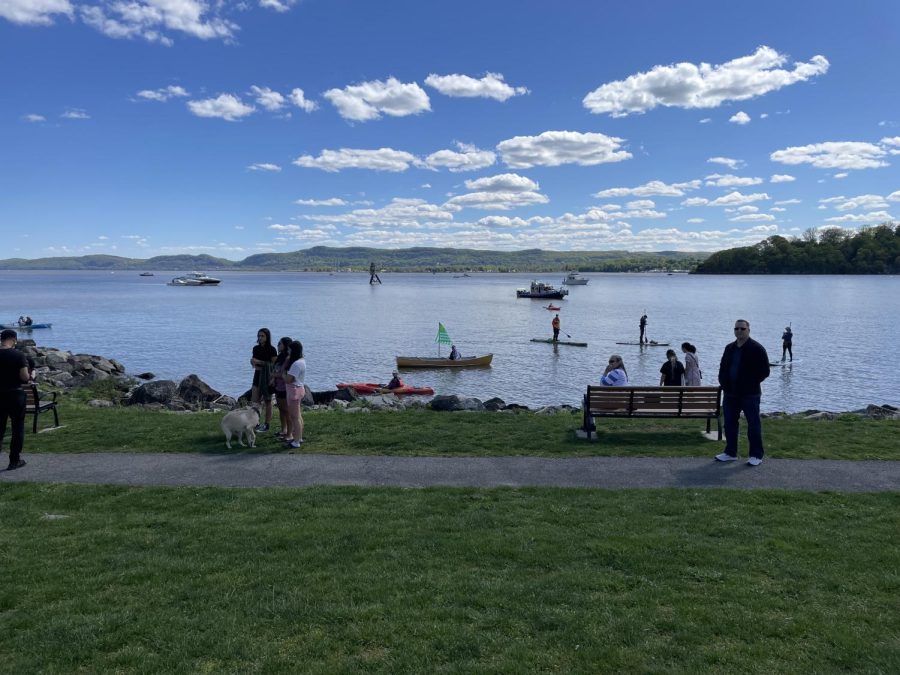
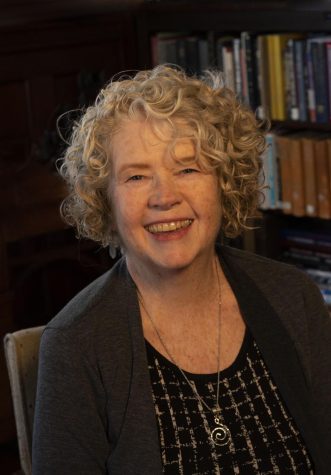








![The fireworks display over the Hudson River will be visible from Riverfront Green Park and the waterfront area. (Peekskill Herald)]](https://peekskillherald.com/wp-content/uploads/2025/07/Fireworks-e1751375539105-288x300.png)
